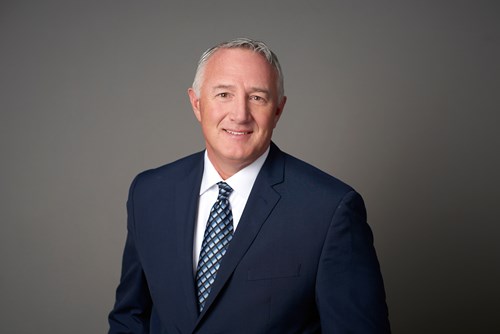

Introduction
Workplace injuries cause stress for employees in multiple ways. There’s the physical pain of the injury and the discomfort of the recovery process. Then there’s frustration surrounding limitations on physical function. Finally, depending on the severity of the injury, there may be fear about whether a return to baseline function is even possible.
Some workers’ comp carriers recognize that addressing an injured worker’s stress can speed up recovery, but not all provide a holistic approach. Integrating an employee assistance program (EAP) into a workers’ comp program supports total worker health after—and before—an injury.
An injured worker may also worry about their place in the workforce and their overall ability to contribute, the effect on their long-term job security, their ability to earn enough income for themselves or their families, and their ability to save for retirement. Such fears can feed a downward spiral of anxiety.
“When an injured employee goes through a traumatic event, it impacts them mentally as well as physically. It affects their sense of self-worth, and these negative feelings can subsequently impair physical recovery,” said Steven Wagner, AVP of Workers’ Compensation at Workpartners.
Helping employees address their concerns and alleviate stress goes a long way in bolstering their recovery process and hastening a return to work, with clear benefits for both employees and employers. Unfortunately, the multifaceted implications of a workplace injury often extend beyond the scope of a typical workers’ compensation program.
Some carriers, like Workpartners, go above and beyond simply paying medical bills to address the whole health of their clients’ employees. EAPs are one approach that aid injured workers through the recovery process and may help reduce injuries in the first place.
Two hallmarks of an effective EAP
An effective EAP supports an employee’s recovery and helps expedite their return to work in the following ways:
1. Counseling for improved mental health
Even outside the realm of workers’ compensation, poor mental health among employees has negative consequences for employers, including poor productivity, increased absenteeism, higher turnover, and increased risk of injury.
According to a Gallup study conducted in 2022, U.S. workers who report fair or poor mental health miss four times as many workdays as their co-workers who report good mental health. These missed days are estimated to cost the economy $47.6 billion every year in lost productivity.
Qualified counselors who help employees talk through their stressors and identify coping strategies can equip workers to handle obstacles and bounce back.
“Absenteeism rates are 27 percent lower in companies that incorporate an EAP compared to those that don’t,” Wagner said.
In the context of workers’ compensation, counselors can address fears that come with being out of work.
Wagner notes that “83 percent of workers that undergo a significant work injury have stress involved, so mental health is a very pertinent factor that we have to address proactively. The longer you set it aside, the more opportunity exists for that person’s stress levels to move in a negative direction.”
“Just having somebody to talk to is such a morale boost to the injured employee,” Wagner said. “They tend to have a more positive outlook on going through the workers’ comp claim process, which sets them on the best path to recover and move forward.”
2. Financial guidance
“While only ancillary to a work-related injury, an injured worker’s finances and budget can cause significant stress for that worker,” Wagner said. “When your income is cut by 30 percent and you’re expected to continue your normal way of life, some anxiety is going to stem from that.”
An EAP with financial health offerings can make qualified advisers available to help employees examine and adjust their personal budgets to accommodate changes in expenses or income. This is especially helpful for injured workers who may be out of work for an extended period of time and unable to bring in their usual pay.
“Our team is able to provide some budgetary assistance to help workers understand their expenses—everything from the mortgage to the grocery budget—to regain a sense of control and confidence in their future. It really helps injured workers get through a difficult time.”
Benefits of true EAP and workers’ comp integration
Employers reap the greatest benefit from an EAP when it is truly integrated with their company’s workers’ comp product. Workpartners offers such an all-in-one solution.
“Our goal is to be more than a monoline workers’ comp carrier. Yes, we’re going to handle your claims, we’re going to make sure the medical bills are paid in a timely way. But we’re also going to help individuals deal with traumatic events, manage their stress, and recover faster,” Wagner said.
Wagner cited internal expertise and strong provider relationships as the driving forces behind a successful EAP and workers’ comp integration. A Medical Management Department maintains direct communication with medical providers who care for injured workers and can assess a worker’s use of the EAP to give adjusters a better understanding of that worker’s recovery path.
“It’s an almost instantaneous relay of information that becomes extremely beneficial and progresses the claim in a positive direction,” Wagner said.*
Counselors working in Workpartners’ programs bring appropriate licensure and years of experience, and they engage in continuous education and trainings to ensure they provide the best support and resources possible.
A strong data analytics approach also helps capture information across programs, which guides safety and injury prevention initiatives.
“We purchased a data analytics company several years ago and continuously incorporate analytics in all Workpartners products. The data tells a more complete story about what has happened in the past but also anticipates what may happen in the future,” Wagner said.
“We’ve become very proactive in trying to prevent injuries from occurring by pulling in our Risk-Control Safety team to evaluate trends, understand where the risks are from a departmental perspective, and look at strategies to reduce the frequency and severity of claims. That assists us greatly in providing favorable outcomes to our insureds.”
The importance of employer buy-in
It’s important to note that the benefits of an EAP mean little without full buy-in and support from employers. It is not enough to implement the program, then step back. Employers are responsible for working in tandem with the EAP to drive employees to these resources, and for incorporating the EAP with the workers’ comp program. This means ensuring that supervisors, risk managers, and others involved in the workers’ comp process are aware of these resources and actively connecting injured workers to them.
“Just having the program doesn’t mean it’s 100 percent effective. Employers have to ensure that the EAP is a part of the standard process when a person is injured at work, and that the follow-through takes place. That is when the results are delivered and the program really pays for itself,” Wagner said.
True integration between an EAP and a workers’ comp program makes it easier to ensure this happens. The two entities can communicate openly and leverage resources effectively.*
From a best-practices perspective, any workers’ compensation program can deliver better outcomes by weaving an injured worker’s mental and emotional health into their physical recovery. An employer-backed, integrated EAP—supported by strong data analytics—is an effective way to help cut claim costs and boost overall worker health.
Our Workpartners Expert

Steven Wagner, AVP of Workers’ Compensation, Workpartners®
*With releases of information signed by employees, allowing inter-interdepartmental communication.





